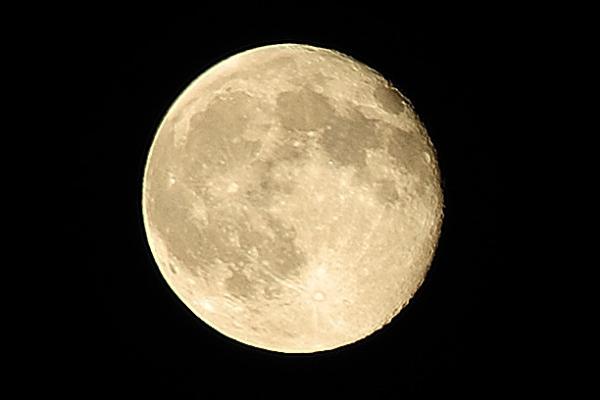What's Up? - Ohio Skylights November 2023

Constellations, Planets, and Astronomical Events Visible in November 2023
The weather continues to grow colder as Autumn reaches its peak, but the nights are growing longer, so it’s time to bundle up and go out to observe! This month we have to remember the end of daylight savings time. On the morning of November 5th, don’t forget to set your clocks 1 hour earlier. After the clock adjustment, the sun will be rising around 7:15 am and setting around 5:15 pm. This means we will have an average of 10 hours of daylight every day this month. Each day, we will lose nearly 2 minutes of daylight. This rate will decrease until the winter solstice next month, where we will then start gaining daylight back.
This month’s full moon occurs on November 27th. It is commonly referred to as the Beaver Moon, since this is when the Native Americans would set their traps to hunt the beaver. The new moon occurs on November 13th, nearly perfect time to observe the meteor showers that occur this month.
There are two meteor showers this month: the Taurids and the Leonids. The Taurids are a minor meteor shower that produces 5-10 meteors at its peak. It is a long running shower that runs from September 7th to December 10th; this year it peaks on the night of November 4th. Meteors will radiate from the constellation Taurus, which rises around 10pm. The third-quarter moon might make viewing difficult, so the best way to observe this shower would be from a dark sky sight. The combination of light pollution, the third quarter moon, and the low rate of meteors make this shower difficult to observe, but with some patience there should be a few visible meteors
The Leonids run annually from November 6-30, and peaks on the evening of November 17th. This year, the shower is expected to produce around 15 meteors per hour at its peak, but it is unique in that it actually varies in intensity. It has a 33 year cyclical period where the rate of meteors varies greatly, and at the peak of this 33 year period there can be hundreds of meteors every hour! The peak was last observed in 2001, so we can look forward to quite a show in November 2034. Until then, we can enjoy a moderate shower this year thanks to the waxing crescent moon keeping the sky dark. The meteors will radiate from the constellation Leo, which does not rise until the early morning, so the best time to observe the shower will be after 3 am on the morning of November 18th.
Mercury is too close to the sun to easily observe at the start of November, but it will continue to move further to the east, so it will become more visible in the evenings later in the month. Venus is still easily visible in the morning sky before sunrise, but it is moving closer to the sun so there will be a time soon when it is invisible in our sky. Mars is still behind the sun, and it will be impossible to observe until next May.
Both Jupiter and Uranus are in opposition this month. Opposition means that a line can be drawn from the Sun, through Earth, to the planet. From our perspective, the surface of the planet will be fully illuminated by the sun, and it will rise at sunset, and set at sunrise. Jupiter’s opposition occurs on November 3rd, and Uranus’ opposition occurs on November 13th. Opposition is the best time to observe planets, since they will be at their brightest. However, Uranus will still not be visible without the aid of a telescope since it is extremely far away, and therefore very dim.
Saturn is starting the night closer to the western horizon. This means it is starting to set only a few hours after sunset. Soon, Saturn will make its journey behind the sun where it will be invisible to stargazers on Earth, just as Mars is right now. Neptune is slightly further east than Saturn. It will be up at sunset and it will set around 2:30 am; but it is too faint to observe without the aid of a telescope.
It is time to say goodbye to the summer triangle. It will still be visible in the western sky at sundown this month, but it will continue to begin the night closer to the horizon. By mid-November, it will no longer be observable until it rises again next summer. However, the end of the summer constellations means the beginning of the winter constellations! The famous hunter, Orion, is visible in the late night/early morning. He chases Taurus the Bull toward the western horizon. These famous winter constellations currently rise around 10 pm, but as we approach the winter season, they will continue to rise earlier in the night.
Sources:
- https://www.timeanddate.com/sun/@5165418?month=11&year=2023
- http://www.seasky.org/astronomy/astronomy-calendar-2023.html
- https://www.timeanddate.com/astronomy/night/usa/columbus
- https://stellarium-web.org/
Images:
- Full Moon: https://inews.co.uk/news/long-reads/beaver-moon-full-november-2021-meaning-names-why-science-explained-448478
- Meteor Showers: https://earthsky.org/astronomy-essentials/earthskys-meteor-shower-guide/
- Jupiter/Galilean Moons: https://www.thoughtco.com/tour-of-jupiters-moons-3073639 Image Credit: Carolyn Collins Petersen
- Taurus/Orion: https://stellarium-web.org/
